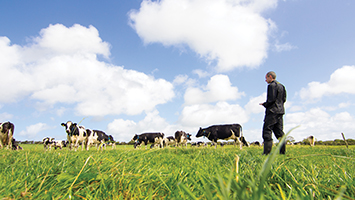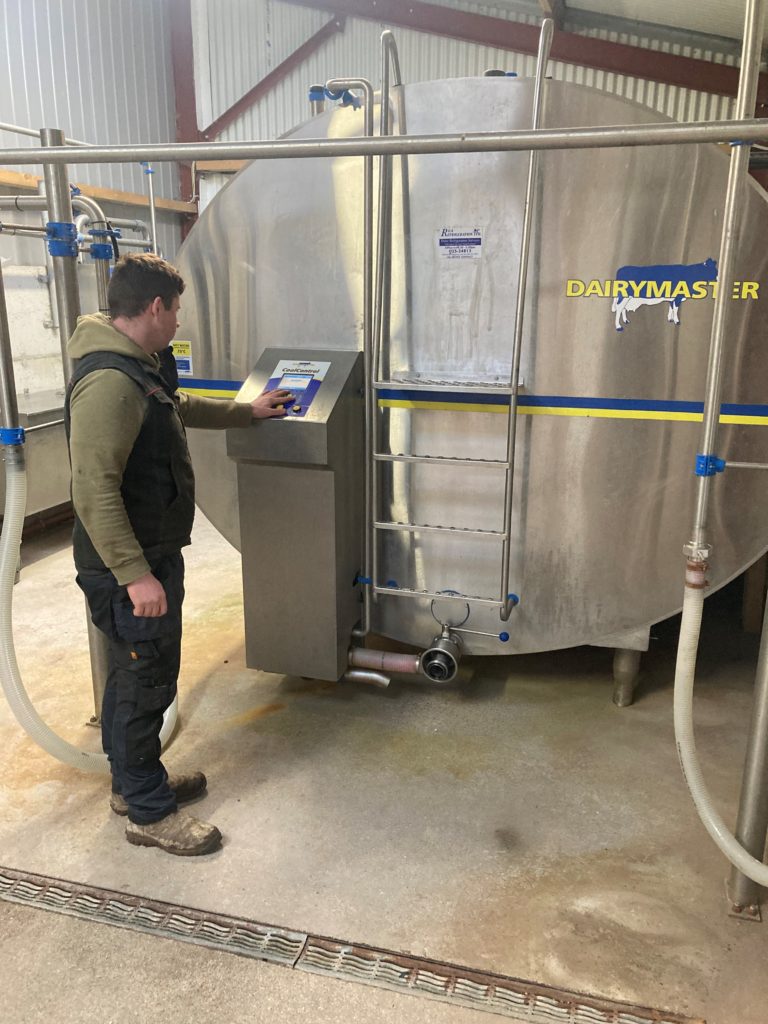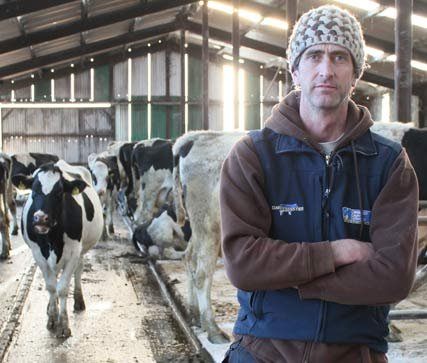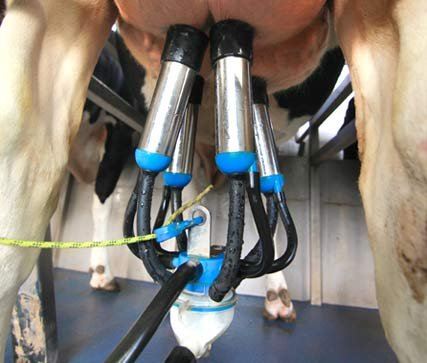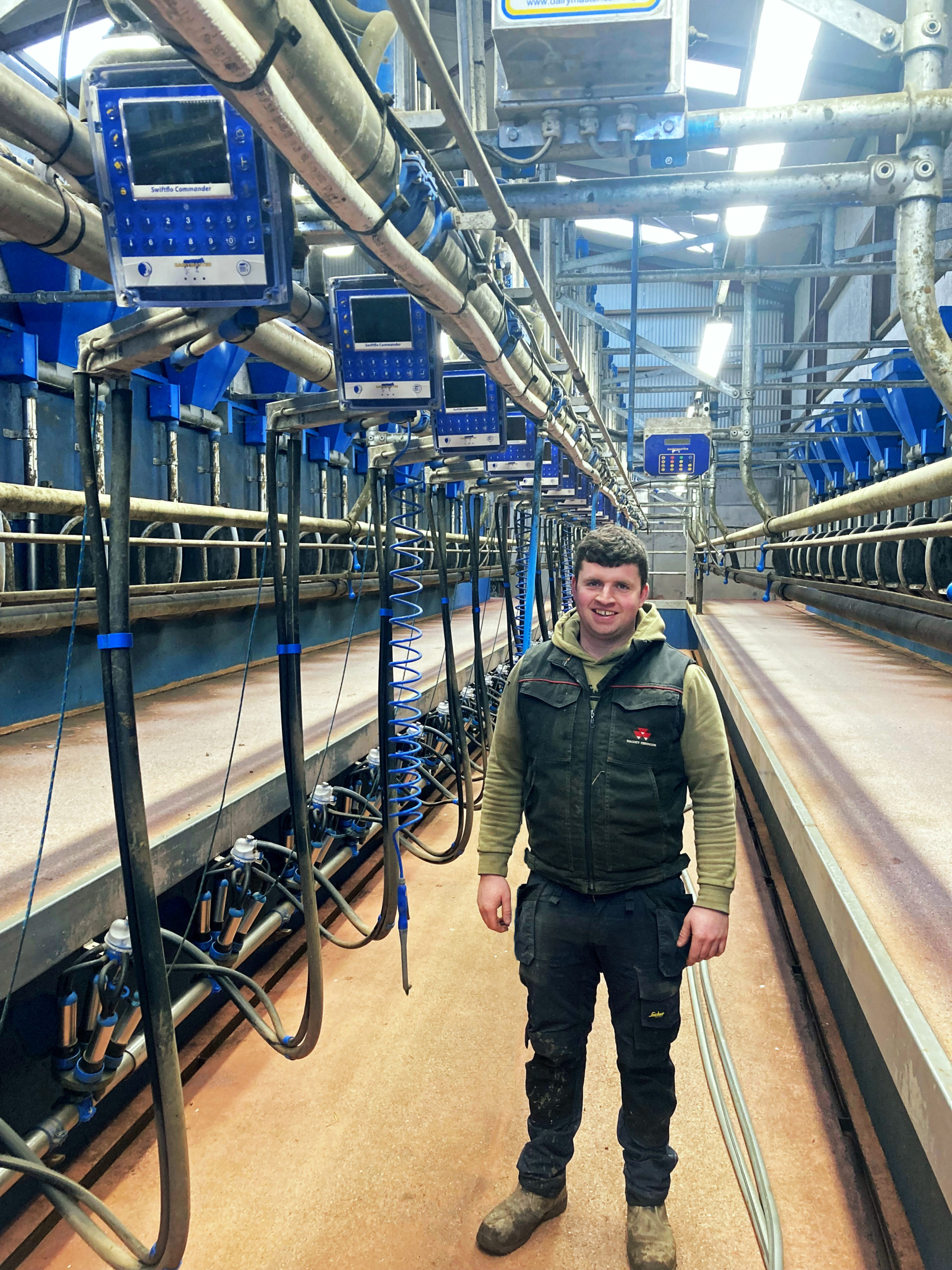
Brian Curtin is milking 130 spring-calving Friesian cows near Glenville, Co. Cork, alongside his father.
Brian returned home eight years ago to farm with his Dad after completing agricultural college.
Like many dairy farms, the duo’s herd size has increased, from 30 cows in 2007 to 130 cows for the 2022 season.
Needing a change
As the herd size grew, infrastructure improvements were needed. The farm had a 10-unit milking parlour, which was installed in the 1980s and was taking two hours to milk in.
The collecting yard was too small and cow comfort was becoming an issue. The old collection yard was also built on a slope, which Brian said was uncomfortable for the cows waiting to be milked.
A decision was made to update the milking parlour and handling facilities, with a Dairymaster 20-unit Swiftflo Swing parlour then installed on the farm.
The new parlour was constructed on the site of the old one, with the site levelled to improve cow comfort.
Brian said: “The old parlour was installed in the 1980s, bits had been added onto it, but it was becoming a bit outdated. We just needed to update the parlour and collection yard, to make life easier on ourselves and the cows.
“We had made the decision that an upgrade was needed. We looked at other brands but I always knew it was going to be a Dairymaster parlour.
“We installed a 20-unit Swiftflo Swing parlour, handling facilities and a drafting unit.
“The new parlour has the Swiftflo Commander, which gives you live information while the cow is being milked.
“We also installed automatic cluster removers (ACRs), a milk diversion line, milk meters, an autowash and Dairymaster feeders.
“Having the live information in front of you means that if a cow’s yield is down, you would notice it.
“You can then draft that cow to have a look at her and treat her if needed. In the old parlour you might not have noticed a cow with reduced yield and then she would be sicker when you go to treat her.”
Halving milking time
Along with cow comfort, a change was needed to reduce the milking time on the farm and improve labour efficiencies.
With milking taking four hours a day and no drafting unit, Brian had to leave the pit to draft cows.
Commenting on this, Brian said: “The new parlour is a huge labour-saver and makes the whole milking experience a lot easier.
“If you want to draft a cow all you have to do is press a button and she’s there waiting for you. It is a major time and labour saver, as well as being much safer.
“There is no more running after cows and everything is just easier.
“The old parlour was taking us two hours, morning and evening. We now finish milking the cows within the hour.”
Along with labour saving, the installation of the new parlour has seen improvement in cell counts, with the herd’s somatic cell count (SCC) halved.
Brian said: “We have also seen a major improvement in cell counts; they’ve gone from 150,000 cells/ml down to 75,000 cells/ml.
“The improved cell counts, I would put down to the cows being more comfortable in the parlour and cows not being over-milked.
“We did not have ACRs in the old parlour and if something happened, where a heifer kicks off the clusters, you would have cows that were over-milked. That doesn’t happen in the new parlour.
“The milk diversion is another major labour saver, you just press a button and the milk goes the opposite way.
“Before, we would have milked into a bucket, which you then had to carry out of the pit. All the small bits of time saved add up and reduce the amount of time you spend working.
“It is also a lot easier on yourself, not carrying buckets of milk out of the pit.”
Biggest change
Commenting on the biggest change on the farm, since the installation of the new parlour, Brian said: “Time is the biggest one; we have more time to get other jobs done.
“You know that you’ll be in and out of the cows in an hour, rather than two.
“It is also just a lot easier, even if I had reduced the milking time in the old parlour, it still wouldn’t be as simple.
“The cows are also just more happy and comfortable in the parlour, which shows in the cell counts,” he concluded.


